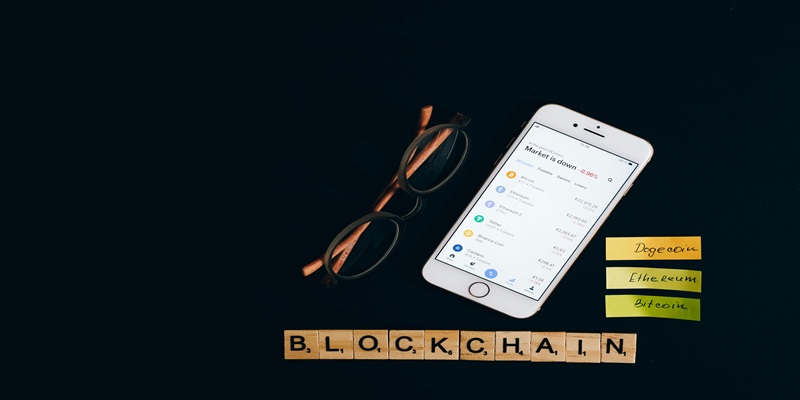The world of digital content consumption has transformed significantly in the last decade, with streaming services leading the way. However, challenges such as unfair revenue distribution, data privacy concerns, and content piracy persist. Blockchain technology is emerging as a game-changer, offering solutions to these longstanding issues. By enhancing transparency, security, and efficiency, blockchain is reshaping the streaming landscape in ways previously unimaginable. Below are seven ways blockchain is revolutionizing the streaming industry.
Decentralization Eliminates Middlemen
Traditional streaming platforms operate on centralized models where a single entity controls content distribution, revenue collection, and payout mechanisms. This setup often results in unfair revenue sharing, with content creators receiving only a fraction of the earnings. Blockchain enables decentralization by allowing peer-to-peer transactions without intermediaries. Through smart contracts, artists and creators receive payments directly from consumers, ensuring fair compensation.
Additionally, decentralized streaming platforms reduce the cost burden on both creators and consumers. The elimination of middlemen leads to lower transaction fees and greater revenue retention for content providers. As a result, more artists can thrive independently, free from corporate gatekeeping.
Transparent and Fair Revenue Distribution
Revenue distribution remains a contentious issue in the streaming industry. Many artists and content creators struggle with delayed and opaque payment processes. Blockchain technology introduces smart contracts that automate revenue distribution based on predefined agreements. These self-executing contracts ensure immediate and transparent payments once predetermined conditions are met.
For instance, platforms leveraging blockchain can automatically allocate earnings based on play counts, engagement metrics, or predefined revenue-sharing models. Since every transaction is recorded on an immutable ledger, disputes over earnings are minimized, and artists can trust the system to be fair and transparent.
Enhanced Security Against Piracy and Copyright Infringement
Content piracy remains a significant challenge for the streaming industry, leading to billions in revenue losses annually. Blockchain addresses this issue by providing immutable and tamper-proof records of content ownership. By embedding digital rights management (DRM) into blockchain, creators can ensure that their intellectual property remains protected from unauthorized use.
Moreover, blockchain-powered watermarking techniques can track content distribution, ensuring that only authorized users access premium content. The decentralized nature of blockchain further prevents data manipulation, reducing the likelihood of content theft and unauthorized reproduction.
Improved Data Privacy and User Control
In the traditional streaming ecosystem, user data is often harvested and monetized without explicit consent. Blockchain enhances data privacy by giving users full control over their personal information. Decentralized identity solutions enable users to authenticate themselves without relying on centralized databases prone to breaches.
With blockchain, users can choose which data to share, whom to share it with, and for how long. This level of control not only enhances security but also fosters trust between platforms and users. Additionally, advertisers can obtain consumer insights directly from users who opt to share data in exchange for rewards, eliminating the need for invasive data tracking methods.
Micropayments Facilitate Flexible Monetization Models
One of the biggest pain points for content creators is the rigid monetization structure imposed by major streaming platforms. Subscription-based models often limit earnings, particularly for independent artists. Blockchain introduces micropayment solutions that allow users to pay for content on a per-view or per-second basis using cryptocurrencies.
With micropayments, users can access specific content without committing to entire subscriptions. This flexibility benefits both consumers and creators, as viewers pay only for what they consume, while artists generate revenue from every interaction. Blockchain’s low transaction fees make this model viable, unlike traditional financial systems that impose high processing costs on small transactions.
Tokenization Encourages Community Engagement
Blockchain technology enables tokenization, which fosters a more engaged streaming community. Platforms can create native tokens that reward users for actions such as watching content, sharing links, writing reviews, or participating in community events. These tokens can be redeemed for premium content, merchandise, or even converted into real-world currency.
This incentive-based model not only increases audience engagement but also creates a decentralized economy where creators and fans have a vested interest in the platform’s success. Furthermore, artists can launch their own tokens, allowing supporters to invest in their content and share in their success.
Cross-Border Transactions Without Currency Restrictions
Streaming platforms operate globally, but cross-border payments often involve high fees and currency conversion complexities. Blockchain simplifies this process by enabling borderless transactions using cryptocurrencies. Content creators can receive payments from international audiences instantly, without the delays and fees associated with traditional banking systems.
Moreover, blockchain-based platforms eliminate the need for third-party payment processors, ensuring that artists retain more of their earnings. This accessibility encourages a more diverse and inclusive streaming landscape where artists from different regions can monetize their content without financial barriers.
Conclusion
Blockchain is revolutionizing the streaming industry by introducing transparency, security, and efficiency. Its decentralized nature eliminates middlemen, ensuring fair revenue distribution and enhanced data privacy. Smart contracts automate payments, while tokenization and micropayments create new monetization opportunities. Moreover, blockchain’s ability to facilitate secure, cross-border transactions empowers content creators worldwide.
As blockchain adoption grows, we can expect even more innovations in the streaming industry. From combating piracy to fostering direct creator-fan relationships, blockchain is paving the way for a more equitable digital content landscape. The future of streaming is decentralized, and blockchain is leading the charge toward a fairer, more transparent ecosystem for all stakeholders.



































